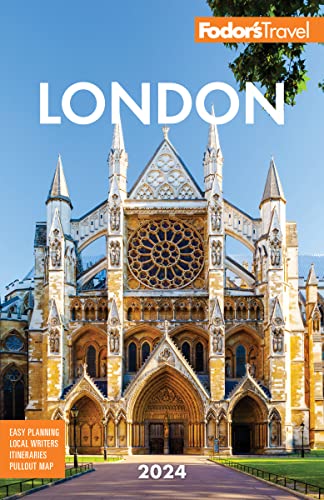Bus Travel
Arriving and Departing
National Express is the biggest British long-distance bus operator and the nearest equivalent to Greyhound. It's not as fast as traveling by train, but it's comfortable (with bathrooms on board). Services depart mainly from Victoria Coach Station, a well-signposted short walk behind the Victoria mainline train station. The departures point is on the corner of Buckingham Palace Road; this is also the main information point. The arrivals point is opposite, at Elizabeth Bridge. National Express buses travel to all large and midsize cities in southern England and the midlands. Scotland and the north are not as well served. The station is extremely busy around holidays and weekends. Arrive at least 30 minutes before departure so you can find the correct exit gate.
Another bus company, Megabus, offers cross-country fares for as little as £1 per person. The company's single- and double-decker buses serve an extensive array of cities across Great Britain with a cheerful budget attitude. In London, buses for all destinations depart from the Green Line bus stand at Victoria Station. Megabus does not accommodate wheelchairs, and the company strictly limits luggage to one piece per person checked, and one piece of hand luggage.
Green Line serves the counties surrounding London, as well as airports. Bus stops (there's no central bus station) are on Buckingham Palace Road, between the Victoria train station and Victoria Coach Station.
Tickets on many long-distance routes are cheaper if purchased in advance, and traveling midweek costs less than over weekends and at holiday periods.
Getting Around London
Private, as opposed to municipal, buses are known as coaches. Although London is famous for its double-decker buses, the old beloved rattletrap Routemasters, with the jump-on, jump-off back platforms, now only serve a single "heritage" route (No. 15H) and only on summer weekends and bank holidays. That route takes you from Trafalgar Square down Fleet Street and on to St. Paul's Cathedral and the Tower of London. Modernized Routemaster buses have taken to the streets on other routes.
Bus stops are clearly indicated; signs at bus stops feature a red TfL symbol on a plain white background. You must flag the bus down at some stops. Each numbered route is listed on the main stop, and buses have a large number on the front with their end destination. Not all buses run the full route at all times; check with the driver to be sure. You can pick up a free bus guide at a TfL Travel Information Centre (at Euston, Liverpool Street, Piccadilly Circus, King's Cross, and Victoria Tube stations; and at Heathrow Airport).
Buses are a good way of seeing the town, particularly if you plan to hop on and off to cover many sights, but don't take a bus if you're in a hurry, as traffic can really slow them down. To get off, press the red "Stop" buttons mounted on poles near the doors. You will usually see a "Bus Stopping" sign light up. Expect to get sardined during rush hour, 8–9:30 am and 4:30–6:30 pm.
Night buses, denoted by an "N" before their route numbers, run midnight–5 am on a more restricted route than day buses. However, some night-bus routes should be approached with caution, and the top deck avoided (the danger is that muggings are most likely to occur there, since it's farthest from both the exit doors and the driver). All night buses run by request stop, so flag them down if you're waiting, or push the button if you want to alight.
All London buses are now cash-free, which means you must buy your ticket before you board the bus. There are a number of ways to do this. One-day paper bus passes are available at underground and rail stations as well as London Transport Visitor Centres and cost £5. An easier, and cheaper, option is to pay by prepaid Oyster card or "contactless" bank card. Visitor Oyster cards must be purchased before you arrive; they cost £5 (plus postage), but a day's bus travel is capped at £4.40. Normal Oyster cards (also £5) are available from ticket desks at all major airports or at any Tube station and are transferable if you have money left over. Contactless cards are increasingly being used for London travel: you touch a compatible debit or credit card on a bus or Tube-station's reader, and the fare is automatically debited from your bank account.
One alternative is to buy a one- or seven-day Travelcard, which is good for both Tube and bus travel. Travelcards can be bought at Tube stations, rail stations, and travel information centers. However, note that seven-day Travelcards bought in London must be loaded onto an Oyster card. Although using a Travelcard may save you some money, it might be easier to just add additional money to your Oyster card as needed, since there are machines at all Tube stations and at lots of London newsagents. A seven-day paper Travelcard can only be purchased in advance, online. However you buy your ticket, just make sure you have one: traveling without a valid ticket makes you liable for a significant fine (£80). Buses are supposed to swing by most stops every five or six minutes, but in reality you often end up waiting a bit longer, although those in the city center are quite reliable.




